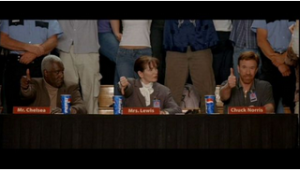Master Class: How to pick the right idea – with Sarah Thrift

Sarah Thrift is the founder of Insight, a consultancy and training company that helps organizations be better.
Many entrepreneurs have Too Many Ideas Syndrome.
“It’s not a shortage of ideas that’s the problem,” says Sarah Thrift, the CEO and founder of Insight Consultancy Solutions. The more common problem, she says, is having tons of ideas and not knowing how to pursue the right one.
For instance, Sarah says that raw chocolate company Chocolution had so many ideas to increase revenue that it almost sank them. They’d come up with ideas for new, exotic flavors. But new flavors didn’t move the needle. So they tested innovative shapes for their chocolates. That didn’t work either.
“They were spending a lot of money on all these ideas,” says Sarah. “They kept thinking, ‘Maybe we’ll hit on something really unusual and catchy that’s going to do it.’ At some point they would’ve totally run out of money, and that probably would have been it.”
But Chocolution started to notice that customers, especially kids, were really interested in the process of creating chocolates. So they held a chocolate-making workshop and sold take-home kits. It was a huge hit.
“Today, not only do they sell loads of these kits, but they’ve done around 4,000 workshops,” says Sarah.
In her Mixergy course, Sarah shows you how to pursue the right idea. Here are three highlights from the course.
1. Idea Hazy, Try Again
 One of Sarah’s clients had been stuck on which idea to pursue for almost three years.
One of Sarah’s clients had been stuck on which idea to pursue for almost three years.
“They had two big ideas,” she says. “One was geographical expansion…and the other was expansion of services.” When Sarah surveyed the team, 48% voted for one approach and 52% voted for the other. With the team split almost in half, they couldn’t move forward.
So what do you do when you’re stuck on more than one idea?
Define your ideas
Write down clear descriptions of each idea.
“If there’s vagueness in the ideas, [writing them down] sort of forces you to come clean,” says Sarah. “It crystallizes ideas and articulates them like, ‘This is specifically what I mean.’ I still do this for myself because writing it down gets me to be clearer.”
And when Sarah did this with her client’s team, she found out that each side actually had a different understanding what “expansion of services” meant. “In this case, [both ideas] were actually possible,” says Sarah. “Once you get to the table, you realize you are not so far apart. You were a bit apart, but not where you thought you were.”
So after the team members were all on the same page, they decided to pursue the expansion of services up to a certain dollar amount, then focus on geographic expansion.
2. Two Ideas Enter, One Idea Leaves
 When more than one idea is on the table, choosing one can turn into a heated debate.
When more than one idea is on the table, choosing one can turn into a heated debate.
“If I’ve got an idea and you’ve got an idea, and then it becomes your idea versus my idea,” says Sarah. “It can become quite emotive…everyone feels they have been hurt and it sort of escalates beyond the original point. Often we lose sight of what the original difference of opinion was, and it’s gone way beyond that.”
So how do you move forward when two parties are equally passionate about their ideas?
Play for the other team
Ask each side to “sell” the other side’s idea.
“It’s helpful to switch around and say, ‘Try to get evidence to support the counter-argument,’” says Sarah. “Sometimes you discover that it wasn’t such a bad idea because you’ve found some data that supports it.”
And this approach also takes emotion out of the equation. “We’re talking about data, not opinion,” says Sarah. “You’re much more likely to step back and say, “Okay, what’s the best thing for the organization?”
3. Let the Experts Make the Call
 What if choosing one idea means choosing the lesser of two evils?
What if choosing one idea means choosing the lesser of two evils?
For instance, Zhi Tea started seeing their profit margin shrink as the cost of tea went up. “It started to not be profitable to sell the same tea in the same packaging at the same price,” says Sarah.
So they had two ideas: increase prices or use cheaper packaging. If they increased prices, they were sure they’d lose customers. If they switched from their beautiful tin containers to a plastic pouch, customers would lose the experience Zhi Tea set out to create.
So how do you know which idea is the right one, when none of the options are appealing?
Consult the experts
Talk to your customers to find out what matters to them.
“We talked to customers in the store and asked, ‘Why do you buy this tea?’” says Sarah. “‘Would you rather have the product at the same price, with different packaging? Or is this packaging an important part of the experience?’”
They found out that customers cared about the packaging, and they were willing to pay more to keep the tin canisters. “So what actually happened was there was a double-digit price rise overnight for all the products,” she says, “and there was not any fall off at all in sales volume. No change.”
Written by April Dykman.
